Sensory, Attentional & Perceptual Processes Class 11 Psychology
Knowing the world
- Knowledge about the objects around us comes from our sense organs (e.g., eyes, ears), which collect information from both the external environment and our own bodies.
- Sensation involves detecting and registering information about various objects through our senses.
- For information to be registered, objects must capture our attention, focusing on their attributes like size, shape, and color.
- The brain processes and constructs meaning from the sensory information received, integrating sensation and attention into our understanding of the world.
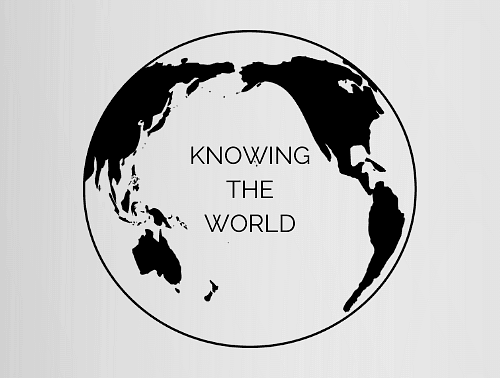
Nature and Varieties of Stimulus
The external environment around us is filled with a diverse array of stimuli. These stimuli can be perceived through various senses:
Visual Stimuli:
- Examples include objects like a house.
- Visual stimuli are detected by our eyes, which are responsible for vision.
Auditory Stimuli:
- Examples include sounds such as music.
- These stimuli are detected by our ears, which are responsible for hearing.
Olfactory Stimuli:
- Examples include scents such as the fragrance of a flower.
- These stimuli are detected by our nose, which is responsible for the sense of smell.
Gustatory Stimuli:
- Examples include tastes like sweets.
- These stimuli are detected by our tongue, which is responsible for the sense of taste.
Tactile Stimuli:
- Examples include sensations such as the softness of a cloth.
- These stimuli are detected by our skin, which is responsible for the sensations of touch, warmth, cold, and pain.
Humans are equipped with seven specialized sense organs, known as sensory receptors or information-gathering systems, because they receive and gather information from various sources:
- Eyes: For vision.
- Ears: For hearing.
- Nose: For smell.
- Tongue: For taste.
- Skin: For touch, warmth, cold, and pain.
- Kinesthetic System: Provides information about body position and the movement of body parts relative to each other.
- Vestibular System: Provides information about balance and spatial orientation.
Together, these sense organs allow us to perceive ten different types of stimuli, such as:
- The brightness or dimness of light, and its color (yellow, red, green, etc.).
- The loudness or faintness of sound, and its nature (melodious or distracting).
- The variety of smells and tastes.
- The tactile sensations of touch, warmth, cold, and pain.
Sense Modalities
Our sense organs provide us with direct information about both the external and internal worlds. The initial experience of a stimulus or object registered by a sense organ is called sensation.
Sensation involves detecting and encoding various physical stimuli, resulting in immediate basic experiences like "hard," "warm," "loud," and "blue." Each sense organ is highly specialized to handle specific types of stimuli, making each one a distinct sense modality.
Functional Limitations of Sense Organs
Limitations in Sensing Stimuli:
- Our eyes cannot see extremely dim or overly bright objects.
- Our ears cannot hear sounds that are too faint or too loud.
- Other sense organs have similar limitations in their functioning.
Range of Stimulation:
- Human sensory organs operate within a limited range of stimulation.
- For a stimulus to be noticed, it must be of an optimal intensity or magnitude.
- This relationship between stimuli and the sensations they evoke is studied in a field called psychophysics.
Absolute Threshold (AL):
- The minimum value of a stimulus required to activate a sensory system is called the absolute threshold or absolute limen (AL).
- For example, if you add a single granule of sugar to a glass of water, you might not taste any sweetness. Adding more granules, one by one, there comes a point when the water tastes sweet. This point is the AL of sweetness.
- The AL varies across individuals and situations depending on organic conditions and motivational states.
- It is assessed based on multiple trials, typically defined as the stimulus level that produces a sensation 50% of the time.
Difference Threshold (DL):
- To notice two stimuli as different, there has to be a minimum difference between them, called the difference threshold or difference limen (DL).
- Continuing with the sugar water example, the DL is the number of additional sugar granules needed to perceive a difference in sweetness from the previously established sweetness.
- The DL represents the smallest change in a physical stimulus that produces a sensation difference in 50% of the trials.
Neural Pathways and Sensory Processes:
- Sensory processes depend not only on the characteristics of the stimulus but also on the functioning of sense organs and neural pathways.
- Sense organs receive stimuli and encode them as electrical impulses.
- These electrical impulses must reach higher brain centers to be noticed.
- Structural or functional defects in the receptor organ, neural pathway, or brain area can lead to partial or complete loss of sensation.
Attentional Processes
Attention involves the selection of a particular stimulus from a set of available stimuli.
For instance, upon entering a mall, we are bombarded with numerous people, shops, and cafes, but we choose to focus our attention on the area we wish to visit.
- Attention has three properties, which are:
- Alertness, which denotes an individual's level of preparedness and eagerness to deal with incoming stimuli.
- Concentration, which involves directing our awareness towards specific stimuli while disregarding others at the moment.
- Search, which refers to the process of looking for a particular subset of stimuli among a larger set.
- Attention has a central focus where our awareness is most acute, as well as a periphery where we are less aware of incoming stimuli.
- When our attention is primarily focused on a specific object or event, it is known as the focal point of attention.
- Conversely, when we have vague awareness of a stimulus, and it is not at the centre of our attention, it is referred to as the fringe of attention.
Types of attention
- Selective attention: Involves choosing a limited number of stimuli from a large set of available stimuli.
- Sustained attention: Pertains to the capacity to sustain focus on a particular stimulus over an extended period.
Note: Sometimes we can also attend two different things at the same time, which is called divided attention.Divided attention refers to the ability to process multiple sources of information simultaneously.
1. Selective Attention
Selective attention is the process of focusing on specific stimuli while ignoring others. It is influenced by various external and internal factors.
Factors Affecting Selective Attention:
External Factors: These factors are associated with the characteristics of stimuli.
- Factors such as size, intensity, and motion play a crucial role in determining what attracts attention.
- Large, bright, and moving stimuli tend to capture our focus easily.
- Novel and moderately complex stimuli also draw our attention. For instance, human faces are more likely to be noticed compared to inanimate objects.
- Additionally, rhythmic auditory cues are more attended to than verbal information.
- Sudden and intense stimuli have a remarkable ability to grab attention.
Internal Factors: These factors reside within the individual and can be categorized into motivational and cognitive factors.
- Motivational Factors: These factors are linked to biological or social needs. For example, when hungry, individuals become highly sensitive to even a faint aroma of food.
- Cognitive Factors: This category includes aspects like interest, attitude, and preparatory set. Individuals are naturally drawn to objects or events that pique their interest.
Theories of Selective Attention
The Filter Theory
- Proposed by Broadbent in 1956, this theory suggests that our sensory receptors receive multiple stimuli, leading to a bottleneck situation.
- The selective filter in our short-term memory system only permits one stimulus to pass through, enabling higher levels of attention.
Filter-Attenuation Theory
- Developed by Treisman in 1962 as a modification of Broadbent's theory, this theory posits that stimuli that do not enter the selective filter at a given moment are not entirely blocked but weakened in strength.
Multimode Theoryd
- Johnston and Heinz proposed the Multimode Theory in 1978, which suggests that attention is a flexible system that allows for the selection of a stimulus over others at three stages.
- The first stage involves constructing sensory representations, the second stage involves constructing semantic representations, and in the third stage, both representations enter our consciousness.
2. Sustained Attention
- Selective attention involves choosing certain stimuli, while sustained attention focuses on concentration over time.
- Sustained attention is our ability to stay focused on an object or event for extended periods, often called "vigilance."
- Examples of sustained attention include roles like air traffic controllers who constantly monitor unpredictable signals for safety.
Factors Affecting Sustained Attention
- Sensory Modality: Research indicates that performance tends to be better when the stimuli are auditory compared to when they are visual.
- Clarity of Stimuli: Intense and long-lasting stimuli have been found to enhance sustained attention, which in turn leads to better performance.
- Temporal Uncertainty: Stimuli that appear at regular intervals are easier to attend to than those that are unpredictable or irregular.
- Spatial Uncertainty: Stimuli that appear consistently in the same location are more easily attended to than those that appear randomly in different locations.
Span of Attention
The span of attention, or perceptual span, refers to the number of objects a person can grasp in a brief exposure, typically a fraction of a second. It is measured using a tachistoscope. According to Miller’s research, this span generally ranges from five to nine items, commonly known as the "magic number" (seven ± two). This limitation explains why vehicle number plates contain only a few digits and alphabets, making them easier for traffic police to read and remember in case of rule violations.
Perceptual Processes
Perception is the process through which we give meaning to the information provided by our sense organs.
- It involves recognizing, interpreting, and constructing stimuli or events based on our learning, memory, motivation, and emotions.
- Perception is not just an objective interpretation of the external or internal world but also a subjective construction based on our individual perspectives.
Processing Approaches in Perception
- Recognition of objects can occur through bottom-up or top-down processing.
- Bottom-Up Processing: This approach suggests that recognition begins with identifying the parts of an object first before recognizing the whole.
- Top-Down Processing: In contrast, this approach posits that recognition starts with identifying the whole, leading to the identification of its various components.
- Studies indicate that both bottom-up and top-down processes interact to help us understand the world around us
Attention Deficit Hyperactivity Disorder (ADHD)
ADHD is a common behavioral disorder in primary school children, characterized by impulsivity, hyperactivity, and difficulty maintaining attention. It is more prevalent in boys and can persist into adulthood if not managed. Affected children struggle with instructions, social interactions, and academic performance despite normal intelligence.While no strong biological basis is proven, some links to dietary factors exist, with social-psychological influences playing a larger role. Treatment remains debated; Ritalin helps with symptoms but has side effects, while behavioral management and cognitive training, using reinforcement and self-instruction, show long-term effectiveness in improving focus and behavior.
The Perceiver
- Human beings are active recipients in interpreting the world around them.
- Perception is influenced by motivations, expectations, cultural background, past experiences, memories, values, beliefs, and attitudes.
Motivation
- Perception is strongly influenced by the needs and desires of the perceiver.
- For example, hungry individuals are more likely to perceive ambiguous images as food-related compared to non-hungry individuals.
Expectations or Perceptual Sets
- Expectations about what one might perceive in a given situation can significantly influence perception.
- For instance, if the milkman usually delivers milk at 5:30 AM, any knock on the door around that time might be perceived as the milkman's arrival.
Cognitive Styles
- Cognitive style refers to the consistent way individuals engage with their environment, which impacts their perception. There are two main cognitive styles:
- Field-Dependent: Individuals with this cognitive style perceive the world as a whole. They tend to focus on the overall context rather than individual elements. For example, they may take longer to spot a hidden figure in a picture because they are more attuned to the overall scene.
- Field-Independent: People with this cognitive style analyze their surroundings in smaller parts. They are more adept at identifying specific details within a larger context. For instance, they may quickly spot a hidden figure in an image because they focus on individual elements rather than the whole picture.
Cultural Background and Experiences
- Individuals' cultural backgrounds and experiences influence their perception.
- For example, individuals from environments without pictures may struggle to recognize objects in images.
- Studies show that different cultures may perceive and interpret visual cues differently, such as distinguishing between snow types or skin colors.
These factors demonstrate that perception is a complex process influenced by personal, social, and cultural contexts, shaping how individuals interpret stimuli and interact with the world.
Principles of Perceptual Organisation
- Our visual field consists of various elements like points, lines, and colors.
- We perceive these elements as organized wholes or complete objects.
- Form perception is the process of organizing the visual field into meaningful wholes.
Gestalt Psychology
- Gestalt psychologists, such as Köhler, Koftka, and Wertheimer, emphasize that we perceive stimuli as organized wholes.
- They believe that the form of an object is in its entirety, not just the sum of its parts.
- For example, a flower pot with or without flowers remains a whole but with different configurations.
Figure-Ground Segregation
- Figure-ground segregation is the most basic form of organization, where certain aspects stand out from the background.
- When we see words on a page or birds flying in the sky, the words and birds are figures, while the page and sky are background.
Distinguishing Figure from Ground
- The figure has a clear form, while the background is relatively formless.
- The figure is more organized compared to the background.
- The figure has a distinct contour, while the background is contourless.
- The figure appears clearer, limited, and closer, while the background seems unclear, unlimited, and farther away.
Principles of Gestalt Psychologists
- The Principle Of Proximity: According to this principle, the objects that are close together in space or time are perceived together.

- The Principle Of Similarity: According to this principle, objects that are similar to one another and have similar characteristics are perceived as a group
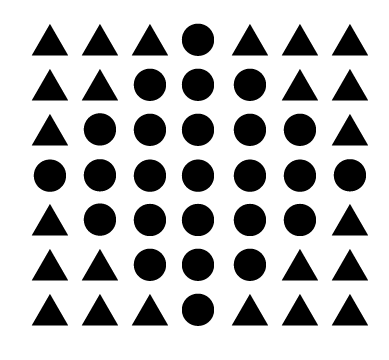
- The Principle Of Continuity: This principle states that we tend to perceive objects as belonging together if they appear to form a continuous pattern.
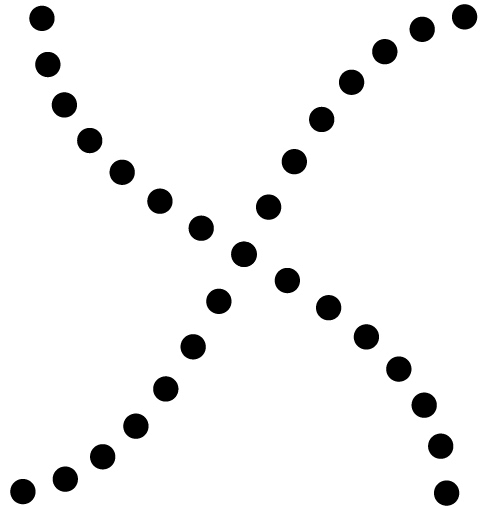
- The Principle Of Smallness: As per this principle, smaller areas tend to be seen as figures against a larger background.
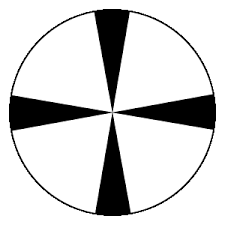
- The Principle Of Symmetry: This principle suggests that symmetrical areas tend to be seen as figures against asymmetrical backgrounds
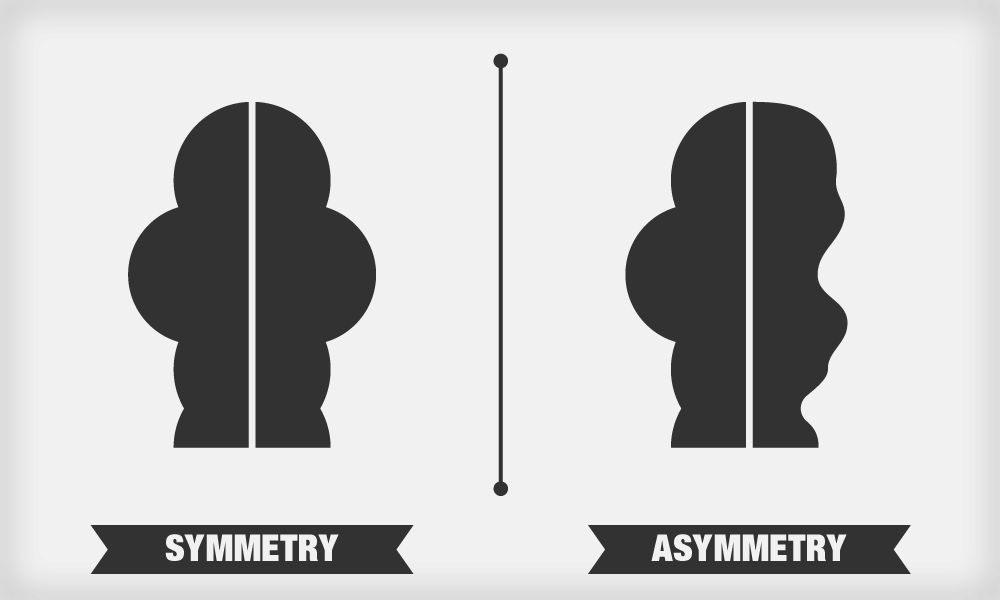
- The Principle Of Surroundedness: This principle suggests that areas surrounded by others tend to be perceived as figures.
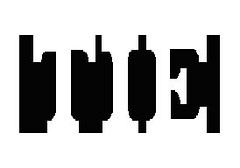
- The Principle Of Closure: We tend to fill gaps in stimulation and tend to perceive objects as a whole rather than their separate parts.
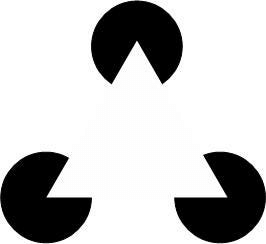
Perception of Space, Depth and Distance
The ability to perceive the world in three dimensions is known as distance or depth perception. In order to perceive depth, we rely on two main sources of information, known as cues.
Monocular cues
Monocular cues are depth perception cues effective when viewed with one eye, often used in art to create the illusion of depth in two-dimensional images.
There are various monocular cues for perceiving depth, including:
- Relative size: smaller objects appear farther away, while larger objects appear closer.
- Overlapping: when one object partially covers another, the covered object is perceived as farther away.
- Linear perspective: distant objects appear closer together than nearer objects.
- Aerial perspective: the haze or blur caused by dust and moisture in the air makes distant objects appear farther away.
- Light and shade: highlights and shadows on an object can indicate its distance.
- Relative height: larger objects are perceived as closer, while smaller objects are perceived as farther away.
- Texture gradient: the density of visual elements in a scene can indicate distance.
- Motion parallax: when objects at different distances move, they move at different speeds relative to the observer, providing a cue for depth perception.
Binocular Cues (Physiological Cues)
Both eyes give us key clues for perceiving depth in three-dimensional space.
Retinal Disparity
- Due to the horizontal separation of our eyes (about 6.5 cm), each eye forms a slightly different image of the same object.
- The brain uses the difference between these images to judge depth, with a larger disparity indicating a closer object and a smaller disparity indicating a distant object.
Convergence
- When focusing on a nearby object, our eyes turn inward (converge) to align the image on the retina.
- The brain interprets the degree of convergence as a cue for depth, with increased convergence indicating a closer object and decreased convergence indicating a farther object.
Accommodation
- This process involves the ciliary muscles adjusting the thickness of the eye's lens to focus on objects at varying distances.
- The brain receives signals about the degree of muscle contraction to determine the distance of the object, with the lens thickening for near objects and relaxing for distant objects.
Perceptual Constancies
Perceptual constancy refers to the ability to perceive objects in a relatively stable manner, even when there are changes in the stimulation of sensory receptors.
Types of Perceptual Constancies:
- Size constancy is the constancy whereby the perceived size of objects stays consistent even when their distance from the observer or the size of the retinal image changes .
- Shape constancy is the perceptual phenomenon where the perceived shape of familiar objects remains unchanged, even when there are variations in the orientation of the objects that create differences in the pattern of the retinal image.
- Brightness constancy refers to the perceptual tendency to maintain the apparent brightness of an object constant despite changes in the amount of illumination that it receives.
Illusions
Illusions refer to the misperception of sensory information caused by the misinterpretation of signals received by our sense organs.
Two Types of Illusion:
Geometrical illusion
- Muller-Lyer illusion has been shown in the image below.
- All of us perceive line A as shorter than line B, although both lines are equal.
- This illusion is experienced even by children.
- Studies suggest that even animals experience this illusion more or less like us.
- Besides the Muller-Lyer illusion, several other visual illusions are experienced by human beings.
- These illusions are also experienced by birds and animals.
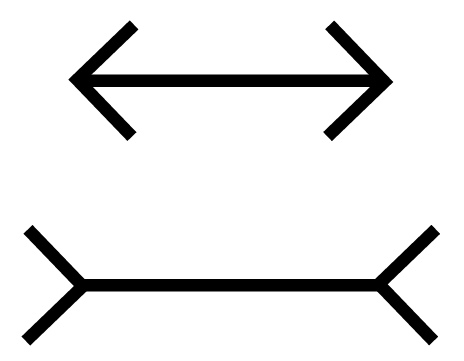 Muller-Lyer Illusion
Muller-Lyer Illusion
Apparent movement illusion
- This illusion is experienced when some motionless pictures are projected one after another at an appropriate rate.
- This illusion is referred to as “phi-phenomenon”.
- When we see moving pictures in a cinema show, we are influenced by this kind of illusion.
- The succession of flickering electrical lights also generates this illusion.

Social Cultural Influences on Perception
Psychologists study perception across different sociocultural settings to understand whether perceptual processes are uniform or vary by culture.
Studies using illusion figures (e.g., Muller-Lyer, Vertical-Horizontal) show that different cultural groups have varying susceptibility to these illusions, with Africans being more susceptible to the horizontal-vertical illusion and Westerners to the Muller-Lyer illusion.
Research by Segall, Campbell, and Herskovits revealed that environmental factors influence perceptual tendencies: Africans in dense forests tend to overestimate vertical lines, while Westerners in right-angled environments tend to underestimate lines with arrowheads.
Hudson's study found that people with minimal exposure to pictures struggled with object recognition and depth cues, indicating that familiarity and instruction are crucial for effective pictorial perception.
Sinha and Mishra's research highlights that cultural experiences influence how people interpret pictures. Individuals with less exposure to pictorial media face difficulties in understanding actions or events depicted in images.
|
43 videos|63 docs|18 tests
|
FAQs on Sensory, Attentional & Perceptual Processes Class 11 Psychology
| 1. What are the different types of sensory modalities and how do they function? |  |
| 2. How do attentional processes influence perception? |  |
| 3. What are the principles of perceptual organization? |  |
| 4. How do we perceive depth, space, and distance? |  |
| 5. What are perceptual constancies and why are they important? |  |























